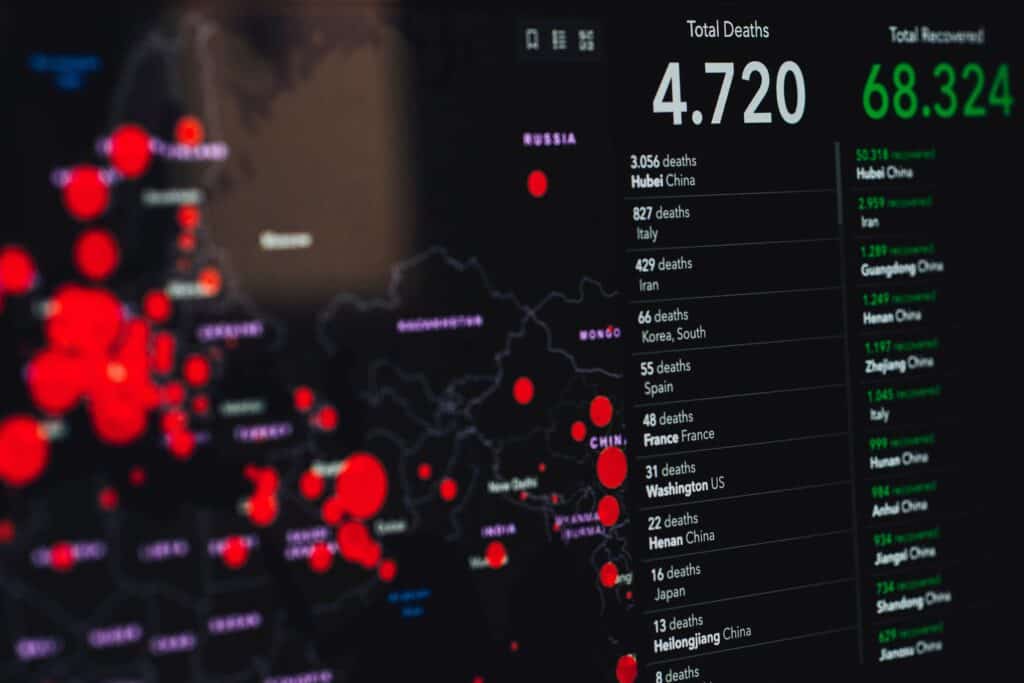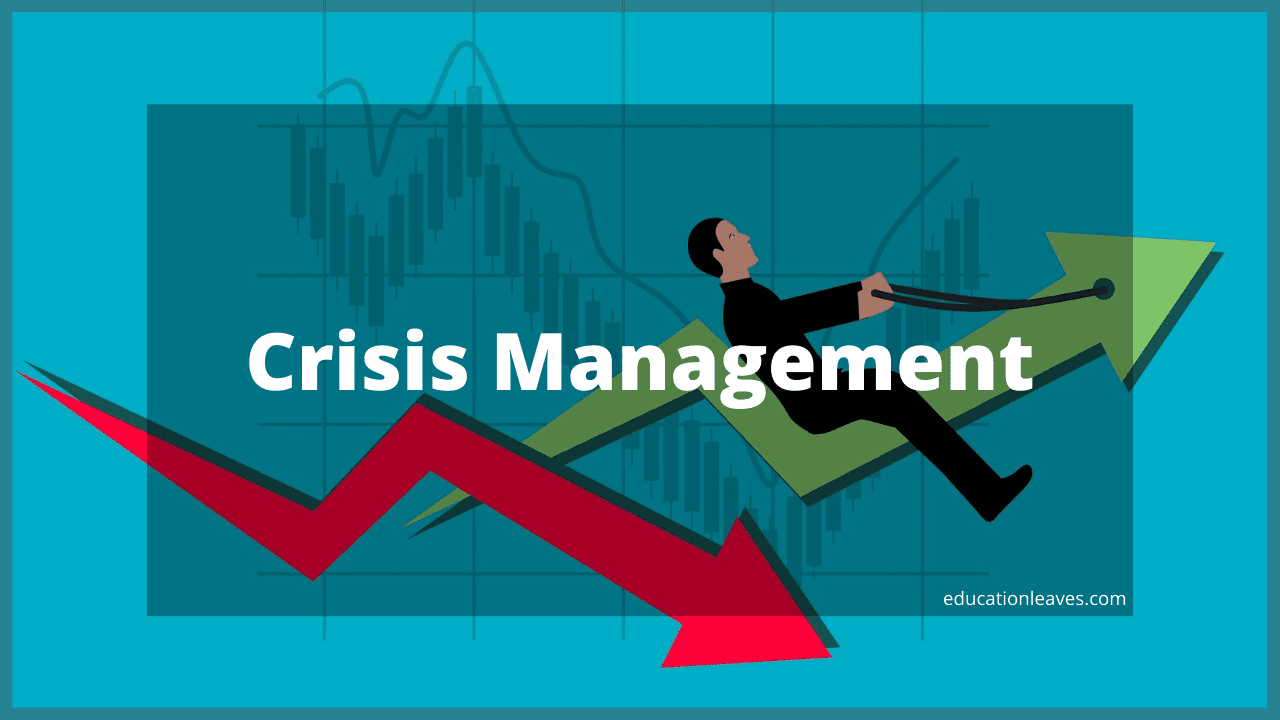Before knowing about crisis management, we must know what a crisis actually is.
A crisis is defined as any event or period that will lead or may lead to a sensitive and dangerous situation affecting an individual, group, or all of society.
These are negative changes in human or environmental events, especially when they take place unexpectedly, with little or no warning. Simply a crisis is a testing time or an emergency.
What you are going to learn?
Types Of Crisis

Technological Issues:
Technological, mechanical, or any electrical failure such as electricity problem, software failure, errors in the system, problems associated with the machines, internet connection problems can lead to a crisis for an organization.
Employee Dissatisfaction:
A crisis arises when employees do not agree with each other and conflict amongst themselves. It also occurs because of boycott, strikes for undefined periods, controversies, disputes, and so on.
Violence:
Violence, terrorism, thefts, crimes, scandals at the workplace result in organizational crisis.
Neglecting Minor Issues:
In the beginning, if you start neglecting the minor issues within the organization, it can lead to a major crisis in the future. The management must have complete supervision over its employees and should not accept a casual attitude at the workplace.
Illegal Behavior:
Accepting bribes, fraud, extortion, data leak, information tempering, these types of illegal behavior can cause a crisis for an organization.
Financial Problems:
Some crises arise because of some financial problems, such as failure in pay credentials, declares, bankruptcy, etc.
Crisis Because of Rumours:
Spreading inaccurate rumors or false assumptions about the business and brand leads to a crisis. Employees must spread nothing which would harm the image of their organization.
Because of Natural Factors:
Some natural factors such as cyclones, super cyclones, floods, volcanos, droughts, heavy rain, earthquakes, etc. result in crisis within an organization.
Even the best-maintained businesses may be affected by a crisis caused by external or internal affairs. To tackle these types of situations, every organization should have a crisis management framework.
What Is Crisis Management?
Crisis management is the art of handling sudden and unexpected events which disturb the employees, organization, as well as external consumers.
Crisis management is the approach of anticipating crises at the corporate level and planning how to deal with them effectively to prevent any threat to an organization.
The recognition of a threat to an organization and its stakeholders in order to mount an effective response to it is called crisis management.
Understanding Crisis Management
Daily newspaper headlines are loaded with the news of the companies dealing with several crises. Smaller companies are often unaware and rarely have a crisis plan in place. They believe it will never take place. But what if it appears?
Suppose you are the owner of a retail company and you realize that one of your primary products or services has made a major health issue—what should you do then? If you are a manager of a construction company and several key members of your team died of an industrial accident—how would you react?
Before a crisis hits, business owners should think about how a disaster can affect employees, consumers, suppliers, the public, and their organization’s value. A crisis can affect any organization anytime, anywhere. Advanced planning is the only key to the survival of any business. By having a crisis settlement plan in the workplace, a company and its stakeholders can prepare for sudden and adverse changes.
Importance Of Crisis management / Advantages of Crisis Management
Most businesses don’t invest in crisis management because, according to their logic, there is almost zero percent chance that a typical business will ever suffer any losses. Well, that type of thought has been fiercely tested by the coronavirus pandemic. Fact is, your business may never be affected by a severe crisis but if a crisis hits, the business may be collapse completely, sometimes so much so that you end up in massive financial and/or legal concern that will affect you long after the business has shut down. In that situation, if you want to keep your company doing business, you need to make a crisis management plan.
Here are some reasons why you should make a crisis management strategy;
1. It helps you determine what a crisis is and who should manage it if it appears
A crisis management plan benefits not only you with that but also shapes your communications plan, makes protocols that determine who should be contacted when and why, and which problems can wait, and which might lead to senior decision-makers being called in urgently. The plan decides who will manage or call the shots during the crisis, who will be the organization’s spokesperson, and which rules will keep employees in line during the crisis.
2. Helps to keep everyone safe
There is no way you will avoid the severe effects of the crises without a foolproof contingency plan. And when the effects are mitigated, your employees, clients, and the public at large will have a better shot at being safe.
Sometimes when an emergency situation arises, such as a bomb scare, terrorist attack, robbery, etc. a well-defined emergency response strategy will help you make every second count. As short as a one-second delay during an emergency could be the reason for someone’s death.
3. Minimize Damage in Both Revenue and Reputation
A Crisis Management Plan makes it easy to identify and prevent a crisis before it takes place or before it gets out of hand that affects both revenue and reputation.
4. Legal Requirement
Crisis management planning is authorized by the government in most countries. You could risk heavy fines and penalties if you operate with no crisis management plan.
5. Helps You Decide Who Needs Which Information
Communication during a crisis has to be multi-phased for it to be efficient. The data/information you share with the public, for example, should not be as detailed as the information you share with trustworthy customers. What you tell the media is not necessarily what information you send to clients’ journals or magazines. What you tell government officers aren’t necessarily the same report you share with investors and shareholders.
6. Helps to Feel the Early Signs of a Crisis
Crisis Management helps the managers to understand the early symptoms of a crisis, notify the employees against the impacts and take necessary precautions for the prevention.
Crisis Management Plans
To tackle any threatening crisis, a proper method and plan must be used for effective crisis management. A crisis management plan is a documented draft of a process to follow for an organization to counter a crisis effectively.
Crisis management planning focuses mainly on building infrastructures that help the company reverse potential risks and how to respond to crises should they arise. It also requires the organization’s workforce and the crisis management team in testing the processes and having proper internal training on the processes.
The following steps are involved in building a crisis management plan;
1. Identify Your Crisis Leadership Team
Before you step into crisis management planning, choose a team of leaders to cooperate with during the crisis planning process. Your team should consist of people who can take action during a crisis. Put this team together at the very initial stage of crisis management planning so everyone knows the ins and outs of your crisis strategy.
2. Assess Risk
To start the planning process, have a deliberate session to evaluate various risks your company may face. As discussed above, you can kick off your brainstorming session by studying risks related to your workplace.
Use a risk register to determine and analyze the possibility of risks occurring. A risk register can reduce progress delays and prepare for possible setbacks. It can also help you anticipate which risks are most likely to take place, so you can plan a response to these risks.
3. Determine the Business Impact
Once you’ve spotted the high-probability risks that could affect your company, figure out the business impact of these risks with the help of your crisis leadership team. Each risk can cause specific results, so it’s necessary to analyze them individually. Potential business affects may include customer attrition, ruined reputation, deferred sales, lost income, or administrative fines.
4. Plan the Response
After that, take each risk you’ve spotted and decide what actions your team would need to take to counter the threat if it happens. For example, if you work in software and your company encounters a cyberattack, you may need someone to protect the network, someone to deliver the news to your customers, and another person to deal with damage assessment.
5. Solidify the Plan
Once you’ve verbally made an understanding of the threats, your company may deal with the business impact, and how to react, solidify your plan. A crisis management plan is more than a written or rhetorical strategy. It should consist of key items, such as an activation protocol and emergency contacts. You’ll also need to coordinate with key stakeholders so that everyone knows what to do and when.
6. Review and Revise
Once your crisis plan is accomplished, check the final product to secure there are no gaps. Reassess your crisis management plan and revise it at least once a year because possible risks can vary with time.
Disadvantages of Crisis Management
I think there are no disadvantages of having a crisis management team and framework, because crisis can arise any time anywhere. Sometimes we think that there is no need for police without any criminal activity, it doesn’t mean there will never going to happen any criminal activity.
But according to the managerial sense, there are some disadvantages such as it consumes a lot of time, money, and human resource. If there any type of crisis will never happen, then having a crisis management team and framework is a waste of money.
Download Crisis Management PDF
https://drive.google.com/file/d/1X-3NNCk05OEFFyQln2Tn-F98MAqdxtny/view?usp=sharing
Related Terms
Strategic Management
In management, strategic management means the formulation and implementation of the important goals and actions taken by an organization‘s managers on behalf of stakeholders, based on consideration of resources and an evaluation of the internal and external environments in which the organization performs. Strategic Management gives overall direction to a business/organization. It involves determining the organization’s objectives, policies, and plans in order to achieve those objectives. It also designates resources to implement the plans. Read More>>>
Risk Management
Risk is essential from return. Every investment involves some risk, that is close to zero with a U.S. T-bill or very high for something such as appearing-market equities or real estate in highly inflationary markets. Risk is vital both in absolute and relative terms. A strong sense of risk in its different forms can help investors to better figure out the opportunities, trade-offs, and costs correlated with different investment approaches. Read More>>>
Management Process
In this article, you’re going to know everything about the process of management.
Management as a process points out that all managers, regardless of their trained skills, act in certain similar activities in order to reach their desired goals. Management process is basically setting goals, planning, organizing, controlling and leading the execution of any type of activities, such as a project or a process. Read More>>>


1 thought on “What is Crisis Management? Types of Crisis, Definition, Importance, Advantages Disadvantages”